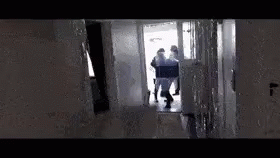I was reading an article on the new LG display with a refresh rate of 7680Hz and it says:
While a typical refresh rate for a monitor might be 60Hz-240Hz, an outdoor display designed to be viewed from a distance needs to be much higher
The idea that there’s an intrinsic link between refresh rate and viewing distance is new to me and feels unintuitive. I can understand the need for high brighteness for far view distance. I also could understand refresh rate mattering for a non-persistent (CRT) display. But for an Led display surely you can see it far away even if it refreshes once a second?
Refresh rate normally needs to be high enough to avoid pixels “jumping” between refreshes on high resolution displays, so wouldn’t higher view distances allow you to decrease the refresh rate?
Is the article just spouting bullshit? Or is there an actual link between refresh rate and view distance?
This is really interesting. I work in a casino and I’d say 90% of slot machines are now just video based.
I’ve noticed when looking a far distance across the gaming floor, slot machines that are physically far away from me appear to have “choppy” reel movement when they spin. As I get closer, they smooth out. It’s really jarring at first and it made me think of video games where things in the far distance are rendered with low resolution models that are replaced with higher resolution models as you get closer.
Maybe there is something to how we view refresh rates from distance that our eyes just lose frames or something.
It’s likely peripheral vision vs focal vision, combined with an optical illusion.
Our eyes are not monolithic, the capabilities vary over the retina. At the center, is a small area of high density, high acuity vision. We actually scan this about rapidly, relying on memory to create a wider image.
This acuity comes at a trade off however. Moving outwards, our vision moves towards motion and low light vision it also loses colour information. This area is great for spotting something sneaking up on you, but not what. This area is a lot more sensitive to flicker than our core vision.
In your case, it’s likely 2 fold. You’re seeing most of the games in your peripheral vision, this makes any flicker more pronounced. Secondly, your eyes/brain are trying to scan and absorb too much information (multiple rapidly changing and unpredictable images, spread out over physical space). The illusion your mind creates breaks down. The visual processing areas of your brain can’t fill in the gaps reliably, so your higher mind perceives stuttering. As you move closer, your focus tightens, and things clear up.
My guess is there’s been a game of telephone with the information.
The refresh rate likely refers to the drivers of the individual LEDS making up the panel.
For those confused, getting a nice linear output from an LED is extremely difficult. They vary significantly based on age, use, and manufacturing tolerances. It’s far easier to just set a max output, and use PWM. By combining 3 (or more) LEDs in a cluster, you can make the full mix of colours and brightnesses available.
Most generic led drivers work at a few khz, so 7.68khz is noticeably higher than normal. This is particularly important at low brightness. If your operation in the bottom 1% already, your available brightness levels go from 20 to 768. This would be particularly important with an outdoor screen. In daylight, you need a lot of output. The same output at night, however, would be blinding.
For an alternative comparison. An HD 50p video signal is 3Gbps. At 7680Hz it would be 460Gbps, an extreme ask of any sort of network. For no significant gain.
My guess is there’s been a game of telephone with the information.
Marketing BS, really. Especially things like “view distance”
except on curved screens, it’s fairly forgiving. Curved monitors, you should be seated as close to its radius; but otherwise, you can have the same apparent monitor size/ resolution with a small, monitor sitting closer as a large monitor further away.
More like marketing running with something they didn’t understand. They took what they thought they heard from the engineers, and wrapped it in marketing BS. A monitor with “7.68khz led drivers” (quite reasonable ) became a monitor with “a 7680hz refresh rate” (quite insane).
With refresh rates like that, you must be talking about LED billboards.
These are different from consumer monitors, which mostly use constant LED backlights and a liquid crystal layer to determine color.
An LED bilboard is going to have a fuckton of singular LEDs - each of which can emit exactly one color - arranged in groups to form full pixels capable of displaying many colors. There is no extra LCD layer between your eyes and the billboard LEDs.
The reason for the high refresh rates is because each led must be extinguished and and relit to redraw the image, and the eye is very good at picking up this strobe effect.
The difference vs. a consumer display is that the backlight in a typical monitor is constant. Refreshes the screen involves sending updated instructions to the LCD layer, twisting the crystals and possibly changing the color they allow through.
To make a crude concrete example:
Imagine I am shining a white flashlight in your face. In front of the flashlight I put a colored piece of plastic so the light hitting you is colored. Then I change the plastic to one with a (slightly) different color. I do this 120 times per second. That is a typical consumer display.
Now imagine I am shining a colored flashlight directly in your face. Then I turn it off and grab a flashlight of a different color and shine it in your face. Imagine I do that 120 times per second. That is an LED billboard.
Which do you think is more likely to give you a headache?
One final complication - the brightness of the LEDs is variable over time, they received a modulated signal rather than a steady voltage, so at lower refresh rates there will be a noticeable ripple across the image, similar to how early CRT screens could look.
Increasing the refresh rate hides a lot of these problems.
Maybe so it won’t flicker when filmed?
Isn’t that more about the specific number than it just being a high number? Like it needs to be a multiple of the refresh rate of the video recorder.
In theory yes, but as there are many different video recorders, going with a super high refresh rate could be a better catch-all so to speak.
Yes and no. If it’s higher the threshold gets wider and you don’t need it to be as perfectly synced because the refresh is so fast the camera can’t pick it up.
I would give you an answer but it would be based on no research or knowledge so probably not very helpful
That… hasn’t stopped anyone else!
If you google something like ‘7680hz led’, you’ll find many results of products and such. 7680 is a multiple of 20, 24, 30, 60, among others, which are all common frame speeds for video files, but also for recording video. I also found this video, which shows the difference of large size screens with different refresh rates: https://www.youtube.com/watch?v=JP6fHWcUifo
It’s because you will see multiple images when turning your eyes or head past it. Imagine looking on a tree to its left, then on one to it’s right. you will see multiple images of the display flickering while doing that. It’s even worse, if you follow a car that’s much closer to you than the display.
Available in a range of interchangeable 10mm pixel pitch panel variants to suit – 120(W) x 120(H), 120 x 90 and 90 x 90 – the Philips Urban LED 6000 Series will deliver unparalleled high contrast (5000:1) and high refresh rates of 7680hz for smooth broadcasting – including live coverage on matchday – with more colour subtlety, shading, and saturated colours.
(so sports broadcast tv cameras dont catch flicker.)
Do sports broadcast cameras operate at over 3840 fps?
its very overkill, yes. beyond future-proof. this is for stadiums and major venues and expect to be around for many years.
Doesn’t make sense to me either. I assume you’ve already tried running a search?
So this study was done:
https://opg.optica.org/jdt/abstract.cfm?uri=jdt-10-8-635
And the summary result was:
The results indicated that the moving picture quality improved more with an increase in frame rate from 60 to 120 frames per second (fps) than from 120 to 240 fps when viewing from a distance of 3 H (three times the image height).
This article goes into the depth of it: https://ieeexplore.ieee.org/abstract/document/8531714
And if I’m understanding the study correctly (which there’s a high chance I am as it’s 4 am and I haven’t had more than an hour sleep in 2 days) but essentially the brain perceived higher frame rates to be higher quality across all participants but with diminishing returns
This is all probably only part of the answer you’re looking for but hopefully it helps you to find the full answer
Is this like the Doppler shift but on a small scale?
I just wanted to add to the useless comments saying they don’t know and can’t be bothered.
I’d also like to chime in and say that I am an expert in the field of large outdoor display technology because I happen to have paid for a gaming monitor with a high refresh rate that I saw reviewed on Linus Tech Tips and therefore this article must have been written by an AI that had no idea what it was talking about. CLICKBAIT ENSHITIFICATION, I tells ya
Doesn’t make sense to me either, without looking into it though.






